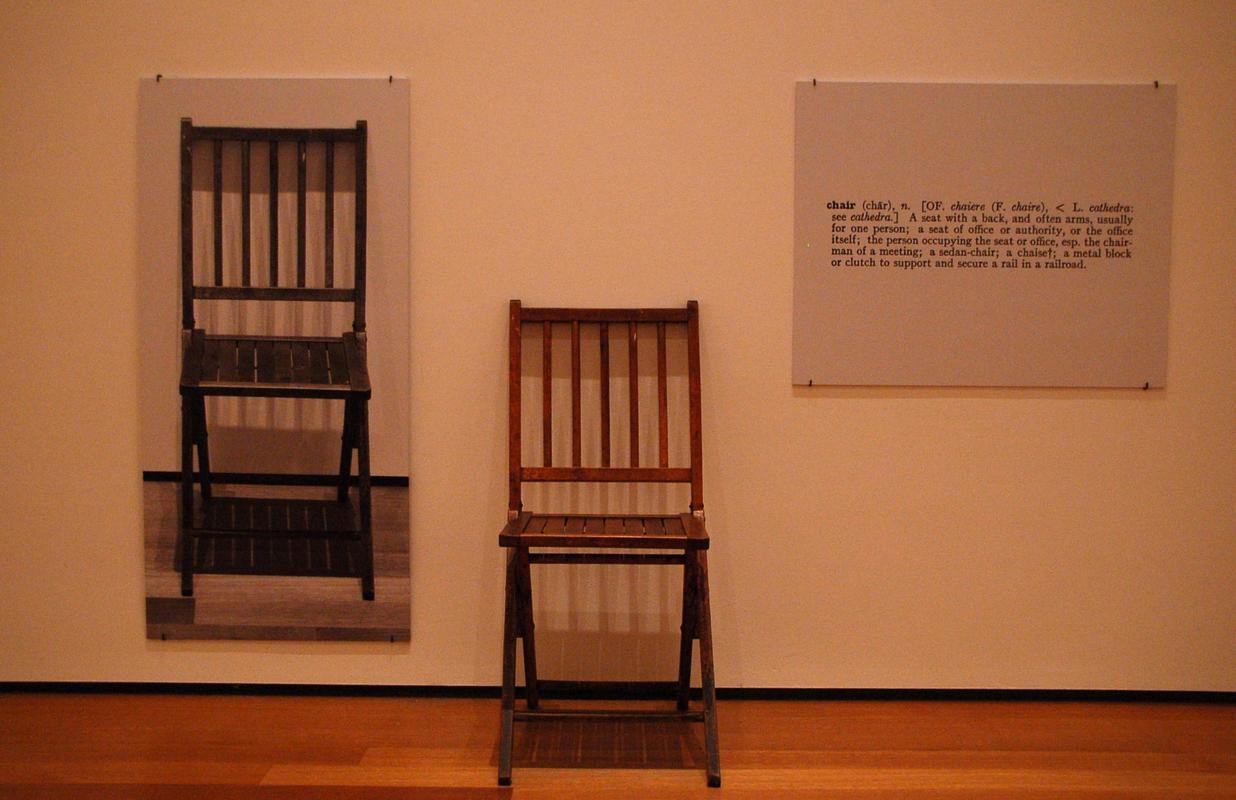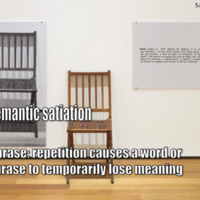More about One and Three Chairs

Sr. Editor
Careful! If you see this piece in the museum, don’t mistake it for a nice spot to take a load off.
Kosuth was trying to get at the anomalies of language by placing a picture of a chair, a chair and the dictionary definition of a chair next to each other in this work of conceptual art. Which is the real chair? How do you understand chair-ness? Is the word chair losing all meaning to you, too? It did to artist Ole Ukena who recreated this piece with a certain raven-haired songstress.
In the end, Kosuth shows us that there are a variety of ways to understand the world, and none of them are quite perfect. He asks us to examine our very perception of reality and our relationship with things around us. Quite the philosophical undertaking. Too bad we can’t sit down while we do it.
Featured Content
Here is what Wikipedia says about One and Three Chairs

One and Three Chairs, 1965, is a work by Joseph Kosuth. An example of conceptual art, the piece consists of a chair, a photograph of the chair, and an enlarged dictionary definition of the word "chair". The photograph depicts the chair as it is actually installed in the room, and thus the work changes each time it is installed in a new venue.
Two elements of the work remain constant: a copy of a dictionary definition of the word "chair" and a diagram with instructions for installation. Both bear Kosuth's signature. Under the instructions, the installer is to choose a chair, place it before a wall, and take a photograph of the chair. This photo is to be enlarged to the size of the actual chair and placed on the wall to the left of the chair. Finally, a blow-up of the copy of the dictionary definition is to be hung to the right of the chair, its upper edge aligned with that of the photograph.
Check out the full Wikipedia article about One and Three Chairs













